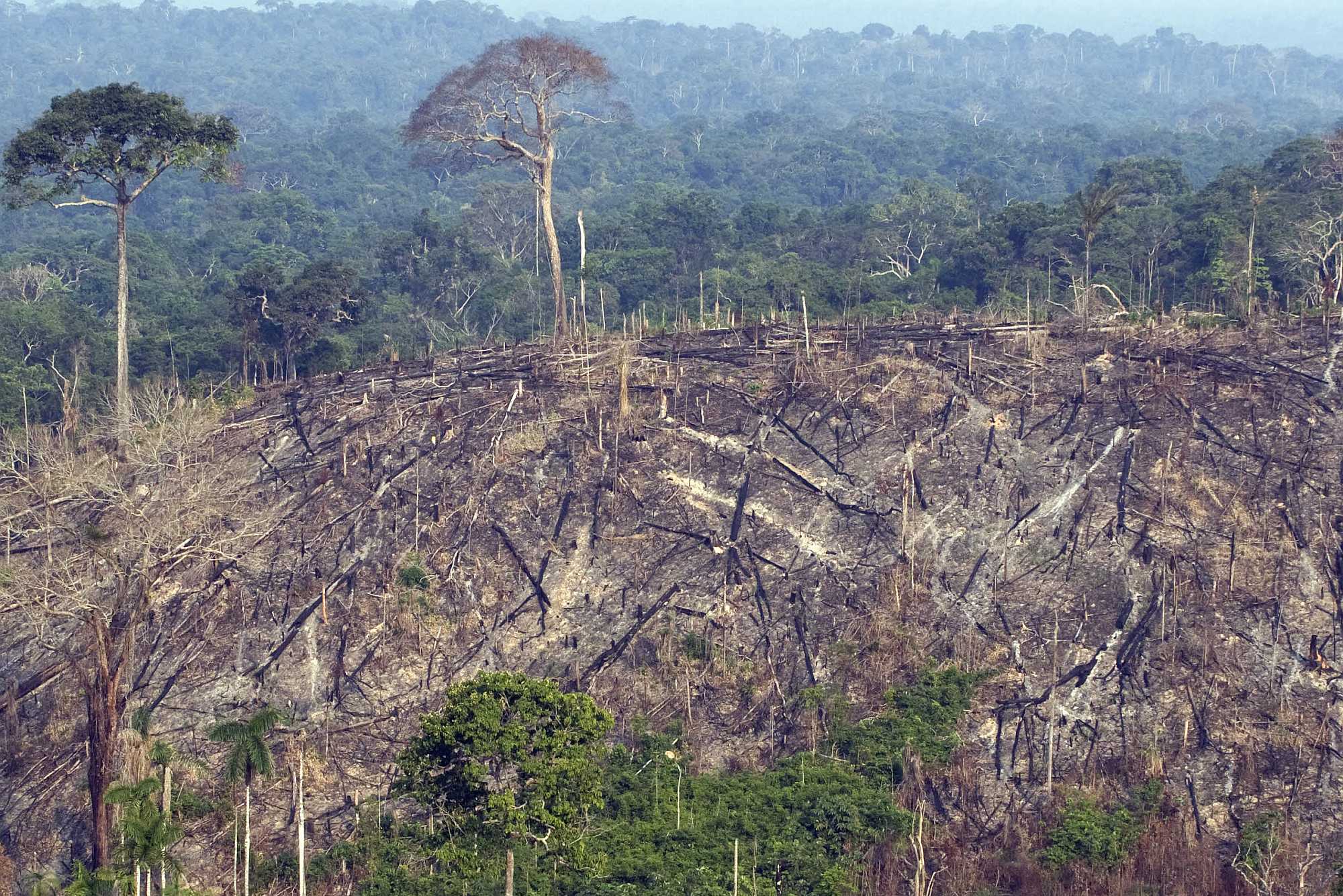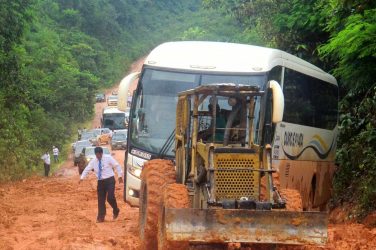Last week saw a busy, but contradictory, stream of actions likely to impact Amazonian forests. Brazilian president Michel Temer — supposedly at the urging of supermodel and environmentalist Gisele Bündchen — killed measures to dismember a national forest and national park in Pará state.
But the day before the veto, his administration quietly announced plans to send a new bill to Congress to dismember the very same conservation units (CUs).
At the end of last week, Temer traveled to Norway and met with that country’s prime minister. Oslo, citing a 29 percent increase in deforestation in Brazil between August 2015 and August 2016, warned Temer that his nation stands on the verge of losing millions of dollars in financial aid that Norway annually pays to Brazil to help rein in Amazon deforestation.
This week, China announced plans to supply Brazil with a US$ 20 billion fund for infrastructure development, including railways, to move soy and other grains from Brazil’s interior to the coast. Past large scale transportation projects have resulted in significantly increased deforestation.
Presidential veto
Hours before leaving for Russia to meet with Vladimir Putin last Monday, 19 June, President Temer vetoed two provisional measures (MPs) 756/16 and 758/16, (one in full, the other in part) which he himself had initiated, and which had gone through changes in Congress and been approved by both chambers in May.
MP 756 was vetoed in full. It would have dismembered the National Forest of Jamanxim, in Pará state, reducing the area of fully protected lands by 486,000 hectares (1,876 square miles), and converting those lands to an Area of Environmental Protection, which allows for private ownership as well as mining and agriculture.
The measure would also have decreased the size of São Joaquim National Park, in Santa Catarina state, from 49,000 hectares (189 square miles) to 39,000 (150 square miles).
MP 758 was partially rejected. Under the legislation, 101,000 hectares (389 square miles) of Jamanxim National Park would have become an APA, but this portion of the measure was vetoed. However, the Official Gazette of the Union published on June 20 noted a reduction of 862 hectares (3.3 square mile) from the national park, as this item was not vetoed by president Temer.
The publication doesn’t mention the land’s future use, but the 862 hectares would likely allow for the construction of the Ferrogrão railroad, parallel to the BR-163 highway. The new railway would transport soy and other commodities to the coast.
In a message to Enuncio Oliveira, the president of the Senate, Temer explained his veto of MP 756 as having the potential to “compromise and weaken environmental preservation in a sensitive region of the Amazon.”
When Is a Veto Not a Veto?
The veto news, however, was met with apprehension by environmentalists. In a video released a day before the presidential veto signing, Environment Minister José Sarney Filho announced, along with Senator for Pará, Flexa Ribeiro — an important member of the bancada ruralista agribusiness lobby — that the government would be sending an urgent request to Congress for a new bill nearly matching the content of MP 756 that would reduce the Jamanxin National Forest by 300,000 hectares (1,158 square miles).
According to Sarney Filho, Temer’s veto was necessary apparently not because of environmentalists’ pleas, but because the MPs had been approved without public hearings, leading the Federal Public Ministry (MPF), independent federal litigators, to promise to file suit against the measures in court if they were signed into law.
The environmental minister claimed the new bill will aim at ending “land conflict” in the region. The disputed portions of Jamanxim National Forest and National Park have long been occupied by land thieves, who have cleared and raised cattle illegally on the federal lands. MP 756 / 758 seemed to be targeted at legitimizing those illegal land uses and claims.
“It is a situation difficult to understand. The government will send a bill to the Congress that will have the same effect as the measures vetoed by Temer,” said André Guimarães, executive director of the Amazon Environmental Research Institute (IPAM).
The new bill will be “worse” he said, as it could be even harder to defend against. Unlike an MP, the new measure cannot be easily challenged by the MPF independent federal litigators.
In a statement, Greenpeace Brasil declared: “The veto seems to be only a political maneuver, since minister Sarney Filho anticipated that the government would send a bill with identical content. This means that the veto serves only to transfer from the president to the Congress the responsibility of unprotecting this significant portion of the Amazon rainforest….
The MPs 756 and 758 were disfigured in their passage through Congress. In the same way, it is also expected that this [new] bill will receive amendments to unprotect other CUs [conservation units]. The government maneuver brings back the initial threat, with the aim of recovering all the text that was vetoed.”
Meanwhile, journalist Fabiano Maisonnave reported in the Folha de S. Paulo newspaper last week that Rodrigo Maia, president of Brazil’s Chamber of Deputies, and serving as president in Temer’s absence to Norway, was planning to propose a bill replacing MP 756 on Friday 23 June, while the president was still abroad, in order “to spare Temer.”
Maia then denied the story in a letter published in the Readers’ section of Folha de S. Paulo. Journalist Maisonnave said that the information contained in his story was obtained from a high-ranking member of the government’s environmental ministry.
The story’s accuracy was further reinforced by the fact that the government had stated that a replacement bill would be presented by the end of last week, despite Temer’s absence. No such printed bill has been forthcoming as of today.
The communications office at the Ministry of the Environment said that the bill replacing MP 756 had still not been drafted. ICMBio, the agency responsible for the protection of federal conservation units (CUs), said that it is conducting meetings to address the matter.
On Saturday, Sarney Filho announced that the new bill will only be sent to Congress if it is endorsed by ICMBio. However, the agency had announced earlier its plan to follow the lead of the Minister of the Environment, doing whatever he announced in his video concerning the MPs’ veto. As such, it remains unclear as to who will be the first to move the bill forward.
Norway Losing Patience
Another factor may have influenced Temer’s decision to publicly veto the MPs that would have reduced protections on vast areas of already protected Amazon rainforest.
On Friday, 16 June, Norway’s Climate and Environment Minister, Vidar Helgesen, sent a letter to Sarney Filho, expressing strong concern about Brazil’s increasing deforestation rates and reminding the environmental ministry of the rules of Norway’s Amazon Fund. (It was the government of Brazil that unilaterally set up the rules when the fund was established, said Helgensen’s letter.)
“Reversing [the worrying upward deforestation] trend will… determine the future of our results-based partnership,” Helgesen wrote. Based “on current [deforestation] trends, the results-based contributions that can be received into the Amazon Fund… are already significantly reduced. Even a fairly modest further increase [in Brazilian deforestation] would take this number to zero.”
“As you are aware, a set of policy measures that have caused strong public reactions in Brazil are making their way to Congress,” he added. “In parallel, budgets for key institutions that provide vital services for forest protection are being cut and their mandate to operate effectively is [being] put under pressure.”
Brazil recently made drastic cuts to FUNAI, the agency that monitors indigenous preserves that protect significant amounts of forest, and to IBAMA, Brazil’s environmental protection agency.
Straight to the point, Helgesen wrote:
“As long standing allies, please allow me to observe that many of the dichotomies of the current debates in Brazil, seen from the outside, appear to be false…. The alternative to these dichotomies is a more… sustainable vision of rural development in Brazil.”
Norway is the largest funder of the Amazon Fund, having donated US$1 billion to Brazil since its creation in 2008 to decrease deforestation. The resources are managed by BNDES, Brazil’s gigantic national development bank.
Sarney Filho defended Brazil’s record, telling Helgesen that preliminary data suggests that the 29 percent increase in the deforestation rate seen between 2015 and 2016 may have leveled off since then.
Data, he said, “indicate that we may have stopped the rising curve of deforestation recorded from August 2014 through July 2016. We hope that the new data will soon reveal a downward trend,” Reuters reported.
In Oslo, Prime Minister Erna Solberg met with president Temer last Friday. After the meeting, at a news conference, she expressed deep concern about the increased deforestation in the Amazon, as well as about the Lava Jato corruption investigation in Brazil, which recently put President Temer in its sights.
On Monday, 26 June, Brazil’s top prosecutor charged President Temer with taking multimillion dollar bribes, which will likely further destabilize his government.
Last week, Solberg confirmed Oslo’s reduction in its contribution to the Amazon Fund for 2017, a cut of 50 percent, to about US$
60 million. She cautioned that if Brazil does “not reach the targets, [the transfer of funds will] be reduced or there will be no payments [at all].”
The environmental cooperation agreement between Norway and Brazil is valid until 2020, and might not be renewed if Brazil’s deforestation rates continue to rise.
Data released by Brazil’s National Space Research Institute (INPE) last November showed that 7,989 square kilometers of Brazilian Amazon rainforest were destroyed between August 2015 and July 2016. Under current benchmarks, a rise in annual Brazilian Amazon deforestation of 8,500 square kilometers, or more, would result in a zero annual Amazon Fund payment from Norway.
In other news this week, China announced a $20 billion fund available to Brazil for the construction of railroads and other infrastructure to benefit soy and corn agribusiness, and rapidly move commodities from the interior to ports. Past large scale transportation improvements to Amazon infrastructure have led to markedly increased deforestation. China is a major buyer of Brazilian grains.
Contradictory Efforts
Brazil has promised to significantly curb its deforestation rates under the Paris Climate Agreement, but its actions in recent months could potentially undermine that goal.
President Temer has also yet to decide whether he will sign the revised Terra Legal legislation, MP 759, called the Conversion Law Project PLC 12/16, a measure designed to help peasant families obtain small plots of land. The new version introduces loopholes allowing wealthy landowners to use the program, threatening the environment.
Analysts say the new law, if passed, will allow another 20 million hectares (77,200 square miles) of the Amazon biome and 40 million hectares (154,440 square miles) of the Cerrado, savanna biome, to be legally cleared. Temer must make a decision by 4 July.
The government has also made no move to reverse massive cuts to its environmental and indigenous agencies. Legislation that would drastically simplify and streamline the environmental licensing process for major infrastructure and agribusiness projects, reducing rainforest protections, also apparently continues to move toward passage.
This article appeared originally in Mongabay – https://news.mongabay.com











